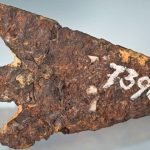Scientists discover Europe’s oldest cannon in Swedish waters
Imagine going for a dive and discovering something amazing on the ocean floor.
That's what happened in Sweden, where a diver found what might be...
The secrets in stone: How ancient Namibian rock art tells more than we thought
Have you ever doodled a footprint or an animal paw in the sand or on paper?
Imagine someone doing something similar, but on a rock,...
Hidden treasures unearthed: A Spanish cave holds ancient art 24,000 years old!
Imagine walking through a cave and suddenly discovering a wall full of ancient paintings! Well, that's what happened in Spain.
Scientists found a 500-meter-long cave...
Scientists discover the secrets of Lost City of the Incas
Machu Picchu is a famous ancient city in the mountains of Peru.
It's a big tourist spot, and many people wonder who used to live...
What would an ancient Egyptian corpse have smelled like? Pine, balsam and bitumen –...
In 1900 – some 22 years before he discovered the tomb of Tutankhamen – British archaeologist Howard Carter opened another tomb in the Valley...
How our ancestors barely escaped extinction
Scientists have made a groundbreaking discovery that helps us understand a mysterious period in our past.
They found out that there was a time when...
A surprising stone age discovery in Norway
Archaeologists recently dug up something amazing in Vinjeøra, a place in southern Trøndelag County, Norway.
Before they began, Archaeologist Silje Elisabeth Fretheim made a fun...
Ancient cauldrons reveal 5,000-year-old menu
Ever wondered what people ate thousands of years ago? Well, scientists have just found some cool clues in really old cooking pots!
A group of...
This bronze age arrowhead was made out of a meteorite
It’s sometimes hard to remember that meteorites have been hitting our planets for millions of years.
And some of them are made of valuable materials...
Scientists discover 2,000-year-old Roman house in Malta
A group of scientists and students from the University of South Florida have made an exciting find in the country of Malta, located in...










